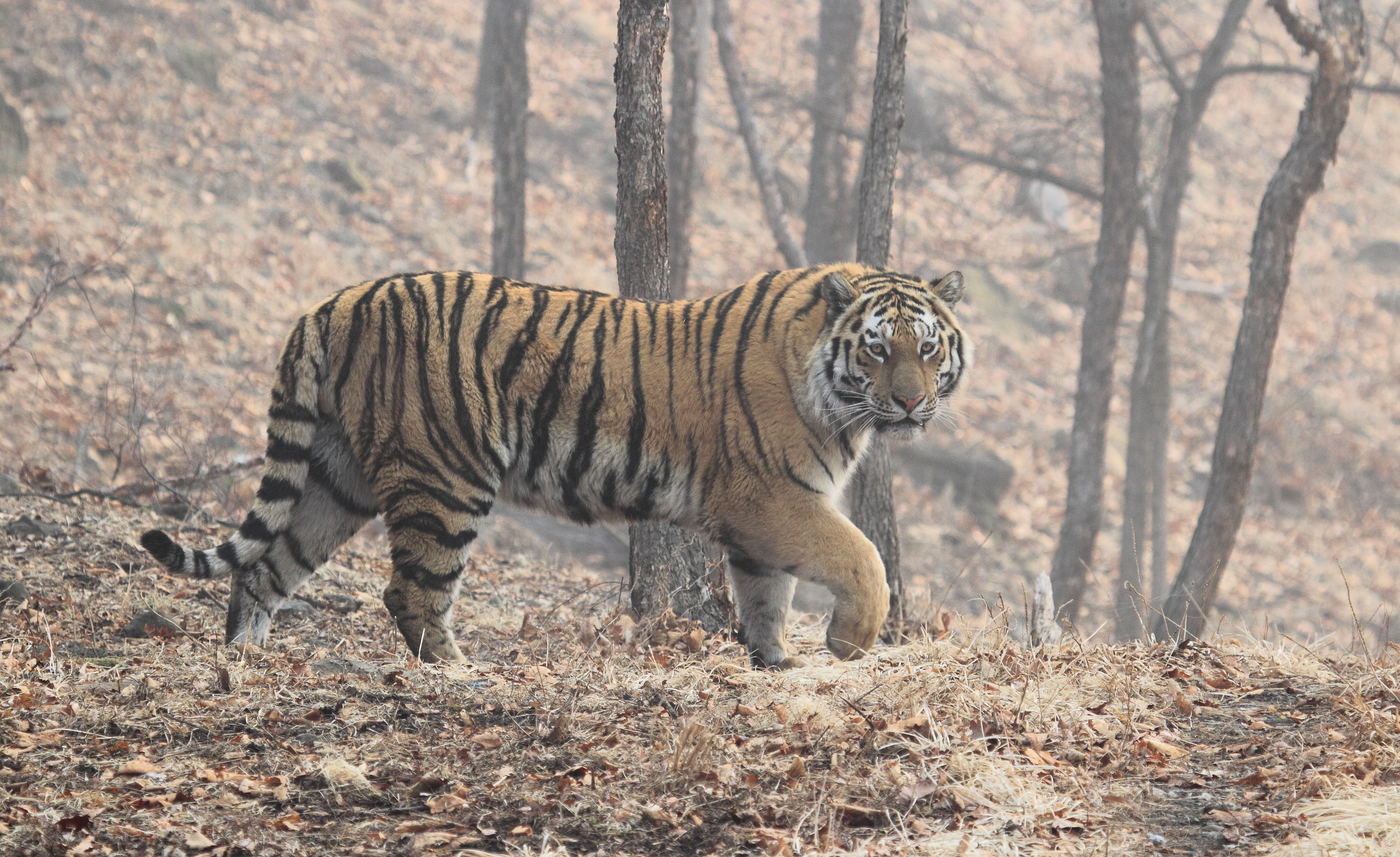Today, the international scientific-practical conference, which was held in Vladivostok on the conservation of the Amur tiger population, is being completed. Participants voiced their ideas on how to improve the Action Plan for the existing Strategy for the conservation of the tiger in Russia.
The plan for the “Strategy for the Conservation of the Amur Tiger in the Russian Federation” has already been implemented by 40 percent. This was announced by Sergey Aramilev, director of the Primorsky branch of the Amur Tiger Center, when summing up the five-year results of the document adopted in Russia.
Half of the tasks specified in the Action Plan are at the decision stage or are close to completion (or are annual), but only 20 percent of the items in this document have not yet been implemented or have stopped in the early stages. For example, in the section of international cooperation on the conservation of the tiger population, the point on the beginning of cooperation with North Korea is not fulfilled. This is a closed country that cannot invite foreign scientists to conduct research, and the world community does not introduce its specialists to the results of research. Nevertheless, the Ministry of Natural Resources and Ecology of the Russian Federation is also working in this direction, also for the participation of Russian specialists in assessing the number of tigers in their territory.
For the implementation of all the objectives of the Strategy and Action Plan, there is another half of the term - the document was adopted until 2020.
“The most difficult section of the Strategy was the improvement of the regulatory framework. And one of the most ambitious goals was to change the criminal code of Russia. At that time (in 2010) it was considered impossible, but this was achieved within three years. It was possible to change the basic laws, and in particular, a new article 258.1 was introduced, which criminalized the storage and movement of parts of the tiger's body. This led to an increase in the detection of such crimes,” said Sergey Aramilev.
The conference participants had to make their proposals on how to improve the Action Plan developed for the implementation of the Strategy.
According to Yuri Darman, to complete the creation of a system of specially protected natural areas in the tiger's area until 2020, it is necessary to take another 1 million hectares under protection - including those areas that are in the potential tiger's area. For example, Pompeevsky National Park in the Jewish Autonomous Region — there are already three tigers there; then the Arsenyevsky Reserve in the Khabarovsk Krai on the left bank of the Amur River, where, as experts hope, there will be a tiger.
“Of course, we have to fulfill what we have planned further. But according to the results of 2015 surveys, 4-5 more natural objects emerged that are very important for the conservation of the tiger - perhaps it is not necessary to create reserves or zakazniks there, but in some way should save these habitats. For example, by creating reproductive or reproduction areas of hunting animals in hunting farms, a system of specially protected forest areas is not strictly prohibited, but try to save these habitats for the tiger,” commented Yuri Darman.
Also, the conference participants suggested, when estimating the number of ungulates in a given territory, to include additional criteria (for example, to pre-factor the poaching factor) in order to prevent the depletion of the tiger's food supply; strengthen anti-cracking activities; to continue work on the establishment and maintenance of the operation of the Center for the Rehabilitation and Reintroduction of Tigers; develop a unified standard method of working with camera traps.
A well-known Russian virologist, professor of FEFU, Mikhail Shchelkanov, speaks about creating a single database of primary biological samples. In his opinion, such a bank of tiger samples (blood, tissue, skins, etc.) could be created on the basis of several sites - the Center for Veterinary Expertise, the Biology and Soil Institute and FEFU.
“In the Center for Expertise, you need to obtain biological materials and store them properly, creating a single bank. After all, we now have a paradoxical situation that somewhere someone has these samples, and even some kind of research result is obtained, but it cannot be rechecked, to make sure it is reliable. For example, a tiger dies, and then several years pass, information appears on this case, but there is no possibility to compare the data,” says Mikhail Schelkanov.
From scientific research to move to practical action offers the research supervisor of Amur tiger studies in 2015 Vladimir Aramilev. In his opinion, the Strategy should include anti-poaching preventive work with the adult population living in the tiger's habitat, as well as conduct a qualitative analysis of the tiger's habitats in order to work on increasing its food supply.
“We have already known for a long time that 80 percent of the Amur tiger population is located on the territory of hunting farms, but half a page is said in the Strategy about their role in this matter. Therefore, this unit should be better developed, detailed. And the Strategy should use all opportunities of hunting farms to increase the number of ungulates,” commented Vladimir Aramilev.
All voiced proposals for improving the effectiveness of the Action Plan and the Strategy for the Conservation of the Amur Tiger will be recorded in a resolution of the scientific-practical conference. This document will be sent for discussion to the Ministry of Natural Resources and Ecology of the Russian Federation.

